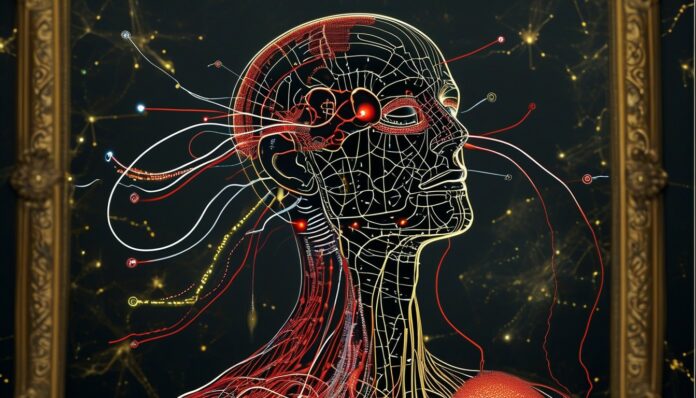The numerous sense organs in the human body are our only connection to the surrounding world. We hear, see, smell, taste, and feel touch… As we explore the world around us, we rarely consider the complex processes involved. And that’s a shame.
Facts About Human Sense Organs:
- Humans receive information about their surroundings through six sense organs: ears, eyes, skin, tongue, nose, and the vestibular system. The data received by each of these organs is transmitted to the nervous system.
- Hearing problems are found in 30% of children, which can lead to poor school performance. This is why doctors insist on hearing diagnostics for infants.
- More than half of the world’s population has vision-related disorders.
- About 1% of people have irises of different colors in their left and right eyes. This is one of the strangest facts about the sense organs.
- There is a theory that overeating negatively affects hearing, but this theory has not yet been proven.
- The pattern of the iris in each person is unique.
- People can only taste solid food after it interacts with saliva.
- No two people smell the same.
- Women are better at distinguishing shades of smell than men. Additionally, women hear much better than men.
- The muscles that control the eyes are the most active in the human body.
- Approximately 2% of the world’s population lacks a sense of smell. This is one of the rarest congenital sensory problems.
- A person cannot sneeze with their eyes open.
- Human memory can store recollections of about 50,000 scents.
- We blink about 17-25 times per minute.
- Loud noises cause pupils to dilate. This is how our senses react to potential danger.
- The cornea is the only part of the human body that does not receive oxygen. Additionally, eyes cannot feel cold because they lack nerve endings.
- Each person has a unique smell, which babies use to identify their mother, and adults can use to find a compatible partner.
- Eyes give the brain more work than any other sense organ.
- A dog’s sense of smell is nearly a million times stronger than that of a human.
- Ears are not only organs of hearing but also important elements of the vestibular system—they help a person maintain balance. Other sense organs perform only one function.
- Women have better peripheral vision than men.
- The optimal noise level for human hearing is 45-50 decibels—the volume of a calm conversation. Any sounds above this limit negatively affect the human body, including the immune system.
- When you put a large seashell to your ear, you hear not the “sound of the sea” but the sound of your own blood flowing through your veins.
- The common belief about carrots being beneficial for eyesight is not entirely accurate—while carrots do contain a lot of vitamin A, which is good for the eyes, eating carrots is not directly linked to having excellent vision.
- Ears can continue to grow throughout a person’s life.
- Most babies are born with gray-blue eyes, which only acquire their true color by the age of two.
- Our ears can distinguish between roughly 3,000-4,000 different frequencies.
- The tongue is the only sense organ in humans capable of distinguishing tastes.
- The print on every person’s tongue is unique, just like fingerprints.
- The human nose contains about 11 million olfactory cells.
- The shape of the nose is fully formed only by the age of 10.
- The rarest eye color is green, with only 2% of the world’s population having green eyes.
- All blue-eyed people are descended from a single ancestor whose mutated gene appeared about 6,000 years ago.
- If necessary, a person can breathe through just one nostril.
- About 1% of people have different-colored irises in each eye.
- The taste of food is determined not only by the mouth but also by the nose.
- Human eyes can distinguish up to 10 million color variations.
- The ideal perfume for a person is one whose scent they cannot detect.
- The pattern of the iris in each person is as unique as fingerprints or ear shapes.
- In moments of fear, people may feel that events around them are happening very slowly, but this phenomenon is actually due to the brain focusing more intensely.
- If you wear glasses that flip the world upside down for a while, your brain will adapt to this new perspective. When you take off the glasses, the world will still appear upside down for a short time.
- The human brain requires time to process signals from the sense organs, so everything people experience in a given moment is actually related to the previous moment. The perception delay is about 100 milliseconds, but the brain somehow compensates for this—scientists are still unclear on the mechanics of this process.
- Signals from different sense organs reach the brain at different speeds, and the brain then combines them into a single picture.
- The human brain takes 100 milliseconds to process impulses from our sense organs.
- Scary events are sometimes perceived as if they are happening in slow motion, although this is actually because the brain is recording them in greater detail.
- People who are blind from birth and gain sight later in life may perceive many things in a distorted way because their brain doesn’t know how to handle the unfamiliar information. Formerly blind individuals see people moving away from them as shrinking figures.
- If you wear glasses that flip the world upside down for a while, your brain will adapt. When you remove the glasses, the world will still appear upside down for a time.
